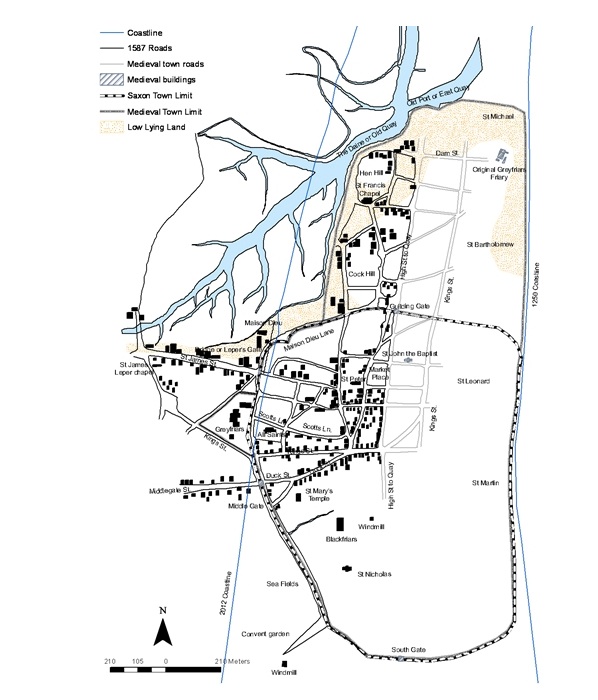Amazing Lost 'Atlantis' Survives Beneath English Sea

The sharpest look yet at an underwater medieval town dubbed England's "Atlantis" reveals that the lost city was once almost as large as the modern City of London, a major district in central London.
Medieval Dunwich was a thriving port in the Middle Ages. Major storms beginning in the 1200s swept the city out to sea and silted up the Dunwich River, choking off the Dunwich harbor. By the 1400s, Dunwich lost its perch as a major port. The city was abandoned, and over the centuries, the ruins continued to slip into the sea as the coast eroded.
The ruins of the city now sit off the coast of the county of Suffolk, England. The lost village has been difficult to explore, as it sits beneath 10 feet to 33 feet (3 meters to 10 meters) of silty, muddy water. The ruins get their nickname from the mythological city of Atlantis that supposedly sank into the sea. [See Images of the Lost City of Dunwich]
Detailed new look
In 2008, researchers at the University of Southampton began an underwater survey of medieval Dunwich. In a new report, the team reveals the most detailed maps yet of the town's streets and buildings, including a chapel and a friary.
“The loss of most of the medieval town of Dunwich over the last few hundred years — one of the most important English ports in the Middle Ages — is part of a long process that is likely to result in more losses in the future," Peter Murphy, a coastal survey expert with the protection group English Heritage, said in a statement. "Everyone was surprised, though, by how much of the eroded town still survives under the sea and is identifiable."
The researchers found that Dunwich's urban center once covered 0.7 square miles (1.8 square kilometers), an area about the size of the City of London. A defensive earthen wall, possibly made by Saxons, enclosed the town's central area.
Get the world’s most fascinating discoveries delivered straight to your inbox.
The survey also revealed the ruins of multiple religious buildings: Blackfriars Friary, St. Peter's, All Saints Church, St. Nicholas Church and the Chapel of St. Katherine. Another large building appears to be a large house or town hall.
The northern part of the town seems to be commercial, with wooden structures probably linked to port activities.
Changing climate
The find is a reminder of how quickly coasts can change, said David Sear, the University of Southampton researcher who led the mapping study.
The storms that swept away Dunwich occurred during a period when climate was changing from a warm period into the little ice age, which ran from about 1350 to 1850.
"Global climate change has made coastal erosion a topical issue in the 21st century, but Dunwich demonstrates that it has happened before," Sear said in a statement.
Social and economic decisions also influence what happens when coastal cities are threatened.
"In the end, with the harbor silting up, the town partly destroyed, and falling market incomes, many people simply gave up on Dunwich," Sear said.
Follow Stephanie Pappas on Twitter and Google+. Follow us @livescience, Facebook & Google+. Original article on LiveScience.com.

Stephanie Pappas is a contributing writer for Live Science, covering topics ranging from geoscience to archaeology to the human brain and behavior. She was previously a senior writer for Live Science but is now a freelancer based in Denver, Colorado, and regularly contributes to Scientific American and The Monitor, the monthly magazine of the American Psychological Association. Stephanie received a bachelor's degree in psychology from the University of South Carolina and a graduate certificate in science communication from the University of California, Santa Cruz.



